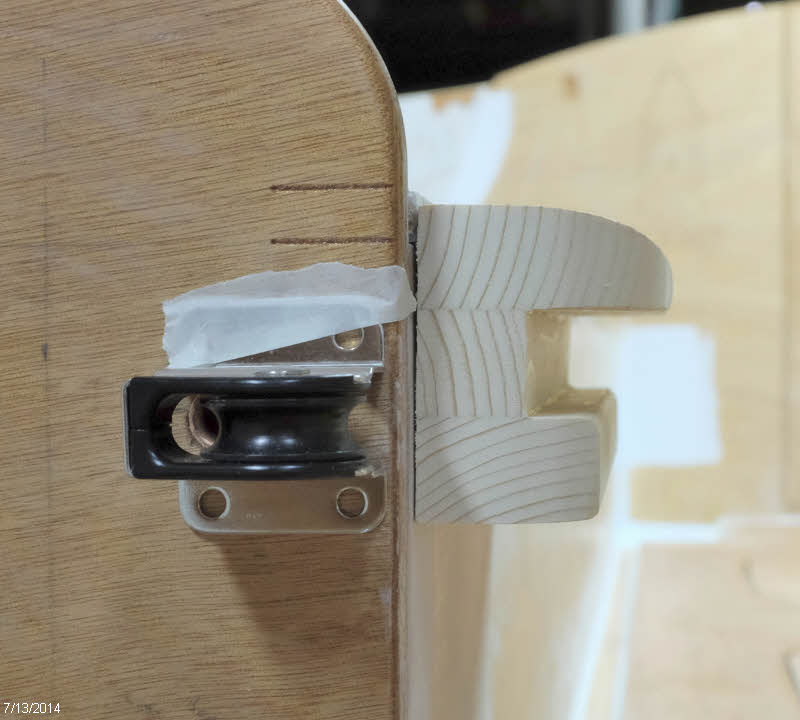I continued with the seat edge construction by using a router to round over all but the top seat edge.
I applied several coats of epoxy on the three surfaces that form the seat-board slot, since it's easier to do that before assembly, and after that cured I applied thickened epoxy to the joints and clamped the parts together.
I didn't have any kind of bit to form the large round-over on the front of the seat edges, so I marked out the edges where I wanted to stop the cut.
And used a power plane to remove the bulk of the wood, then finished up with a spokeshave, followed by sanding with the soft pad on my random-orbit sander.
I fit the back ends to the transom on each side, and then cut them to final length and rounded the forward ends, then coated the remaining untreated areas with epoxy.
On the starboard seat edge I routed a groove for the copper tubing to route the centerboard uphaul line and epoxied that in place.
And after it cured I trimmed off the excess tubing and made sure there were no burrs or sharp edges to wear on the line.
Finally, it was time to epoxy on the port seat edging. I held this in place with a couple clamps and braces from the other seat front. Short sticks support the edging at the correct height. No screws or other fasteners needed.
And the next day glued in the other side.
I left both moldings just proud of the seat tops, so that I can plane/scrape/sand them down to the perfect height. After painting, the transition should be invisible. I like the feel of these edges - they are smooth and comfortable. They add a little weight to the boat, but I think it will be worth it.




















